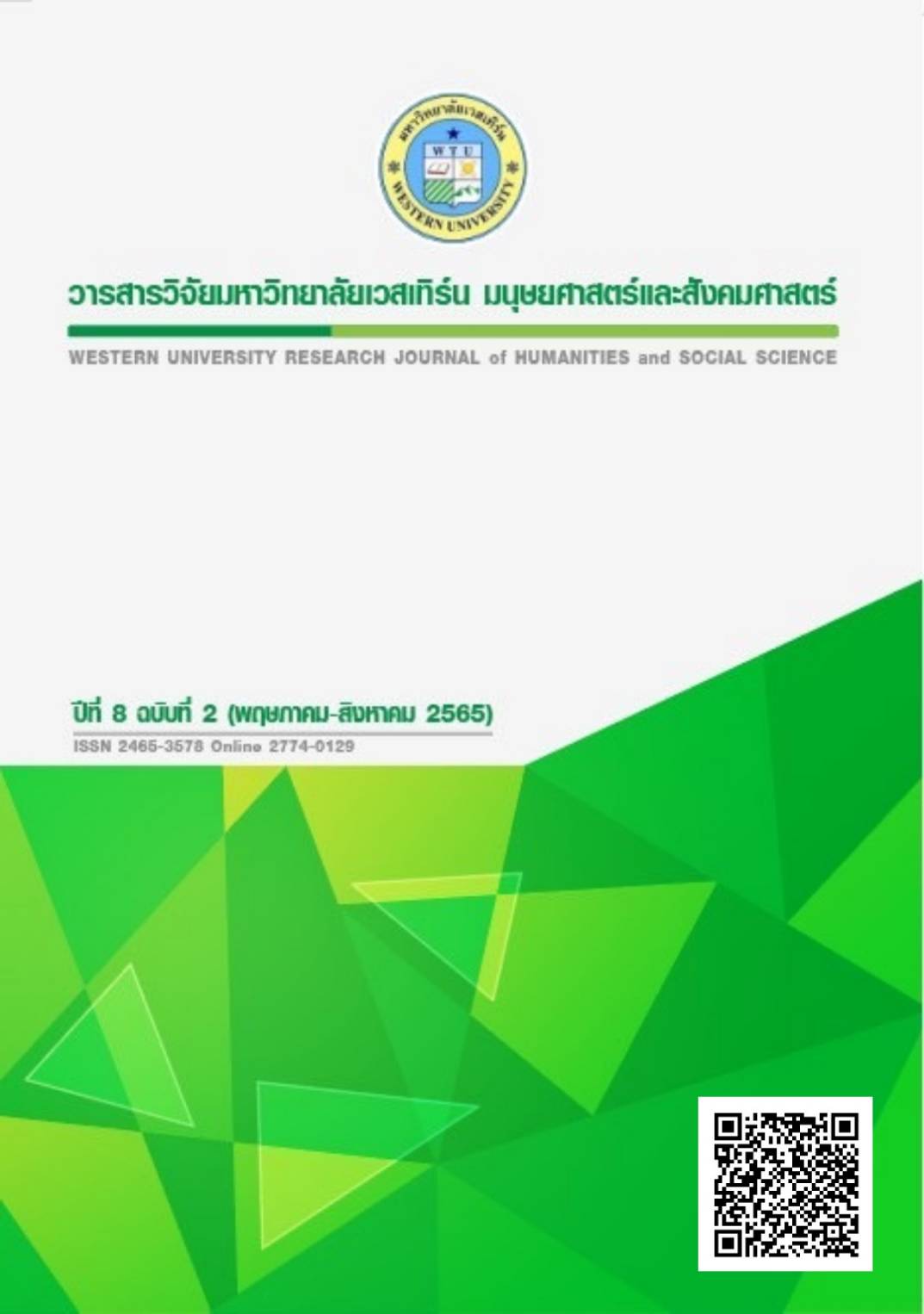A Causal of Practitioner Employee’s Intention to Stay in The Glass Industries Company with Job Embeddedness as Mediator
Main Article Content
Abstract
The purposes of this research were as follows: A Causal of Practitioner Employee’s Intention to stay in the glass industries company with job embeddedness as mediator. The Research Samples consisted of 215 people. A research instrument used in this study was a questionnaire, it was analyzed by a structural equation modelling program (SEM), which showed that the calculated indices provided good model fit (Chi-Square = 49.20, df = 36, Chi-Square/ df = 1.36, P-Value = 0.07, RMSEA = 0.041, CFI = 0.99, TLI = 0.978 SRMR = 0.05 And all variables in the model were accounted for in 73.8%. perceived supervisor support have a total effect with statistically significant on intention to stay (b=0.18, p < .01) and Job embeddedness have a statistically significant on the relationship between perceived supervisor support with intention to stay. (β=-0.05,p<.01) Work family conflic have a total effect with not statistically significant on intention to stay (b =0.04,p < .01) have indirect effect with statistically significant on intention to stay (b=0.55,p = .91) No statistically significant influence of job implantation on the relationship between work-family conflict and intention to stay at work was found. Has a positive direct influence on persistence in the job not statistically significant Has a positive direct influence on persistence in the job .The results showed that perceived supervisor support is therefore important to predict persistence intention to stay. The perception of supervisor support and job embedding is important in predicting persistence in the job The results of this research can be used to plan the design of projects or activities To increase the level of intent to remain in the work of the operational level employees
Article Details

This work is licensed under a Creative Commons Attribution-NonCommercial-NoDerivatives 4.0 International License.
References
ชูชิต ชายทวีป และธนิษฐา สมัย. (2563). การวิเคราะห์รูปแบบภาวะผู้นำที่มีอิทธิพลต่อการรักษาพนักงานให้คงอยู่ในองค์การ. วารสารนวัตกรรมการบริหารและการจัดการ, 8(3), 94-105.
ประคัลภ์ ปัณฑพลังกูร. (2550). การว่าจ้างและรักษาบุคลากร (Hiring and keeping the best people) กรุงเทพฯ: เอ็กซ์เปอร์เนท.
ปราชญา กล้าผจญ, และ พอตา บุตรสุทธิวงศ์. (2550). การบริหารทรัพยากรมนุษย์. กรุงเทพฯ: ก.พลการพิมพ์.
วฤษสพรณัฐ รุจิโรจน์. (2017). ครอบครัวทางเลือกและการคงอยู่ของสถาบันครอบครัว. Veridian E-Journal, Silpakorn University, 10(2), 1817-1827.
Bergiel, B. J., Bergiel, E. B., & Balsmeier, P. W. (2008). Nature of virtual teams: a summary of their advantages and disadvantages. Management Research News.
Carlson, D. S., & Kacmar, K. M. (2000). Work–family conflict in the organization: Do life role values make a difference?. Journal of management, 26(5), 1031-1054.
Cowin, L. S., & Hengstberger-Sims, C. (2006). New graduate nurse self-concept and retention: A longitudinal survey. International journal of nursing studies, 43(1), 59-70.
Cholsiripong, T. (2020). ผลสำรวจพบ ภาพรวมเงินเดือนในไทยปรับตัวต่ำสุดในรอบ 10 ปี. สืบค้นเมื่อ 4 มีนาคม 2564,จาก https://brandinside.asia/mercer-salary-2020-thailand.
Hair, J.F., Black, W.C., Babin, B.J., & Anderson, R.E. (2010). Multivariate Data Analysis. Seventh Edition.Prentice Hall, Upper Saddle River, New Jersey
Kottke, J. L., & Sharafinski, C. E. (1988). Measuring perceived supervisory and organizational support. Educational and psychological Measurement, 48 (4), 1075-1079.
Mathis, R. L., & Jackson John, H. (2010). Human Resource Management 13th ed. Thomson. In: South-Western.
Mitchell, T. R., Holtom, B. C., & Lee, T. W. (2001). How to keep your best employees: Developing an effective retention policy. Academy of Management Perspectives, 15(4), 96-108.

